In the early 1930s, fashion brands like Coco Chanel and Elsa Schiaparelli redefined style with innovation and elegance. Chanel popularized comfortable yet chic designs, while Schiaparelli's surrealist flair challenged traditional norms. On the men's side, Arrow brought us the classic Oxford shirt, and Dobbs made high-quality hats essential. The influence of Hollywood also played a huge role; stars like Joan Crawford inspired trends with their glamorous styles. Together, these brands shaped an era that blended sophistication with practicality. If you're curious about how these styles transformed fashion and culture, there's much more to explore!
Overview of 1930s Fashion Brands
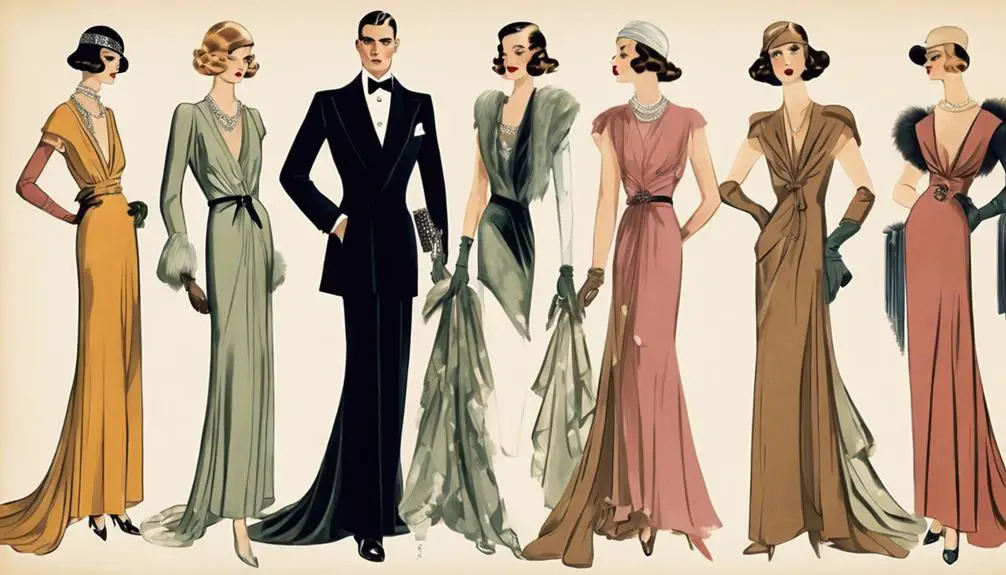
The early 1930s marked a vibrant era for fashion brands that shaped the styles we appreciate today. This period, influenced by the Roaring Twenties, had its own unique flair, as designers adapted to the realities of the Great Depression.
One of the standout figures was Coco Chanel, who introduced the jersey dress, combining comfort with casual elegance. Her designs offered women a stylish escape during tough times, much like the evolution of men's scarves that became stylish accessories during this decade.
Elsa Schiaparelli emerged as another influential name, known for her surrealist designs and bold use of color. By collaborating with artists, she created unique pieces that captured the imagination and inspired many fashion enthusiasts.
Meanwhile, Norman Hartnell gained fame for his royal designs, dressing Queen Elizabeth in intricate, luxurious fabrics that showcased his talent for embroidery.
In menswear, brands like Levi Strauss & Co. revolutionized fashion by popularizing denim, transforming it from mere workwear into a fashionable staple. This marked the start of denim's enduring impact on casual fashion.
Additionally, companies like Arrow and Manhatten offered quality menswear, including the iconic Oxford Cloth Button Down (OCBD) shirts, which became essential items in men's wardrobes during this decade.
Notable Women's Fashion Labels
Amid the glamour and innovation of the early 1930s, several women's fashion labels stood out for their groundbreaking designs and lasting influence. One of the most iconic figures was Coco Chanel, who revolutionized women's fashion with her emphasis on casual elegance. Her designs, like the famous Chanel suit, combined comfort and sophistication, setting the stage for modern women's fashion.
Meanwhile, Elsa Schiaparelli made waves with her surrealist designs and bold artistic embellishments. Her approach challenged traditional fashion norms, emphasizing creativity that turned heads and sparked conversations.
Then there was Madeleine Vionnet, a true pioneer of the bias cut. This technique allowed her evening gowns to hug the body beautifully, making them favorites among Hollywood stars and establishing her as a leading designer of the decade.
Jeanne Lanvin also deserves a mention for her luxurious fabrics and feminine designs. Her elegant eveningwear and day dresses celebrated the natural female form, showcasing intricate detailing that radiated fashionable elegance.
Each of these designers brought something unique to the table, shaping the way women dressed and expressed themselves. Together, these labels not only defined a decade but also laid the groundwork for future fashion trends.
Whether it was Chanel's sophisticated comfort, Schiaparelli's bold creativity, Vionnet's fluid silhouettes, or Lanvin's luxurious femininity, these brands created a legacy that continues to influence women's fashion today.
Key Men's Fashion Brands
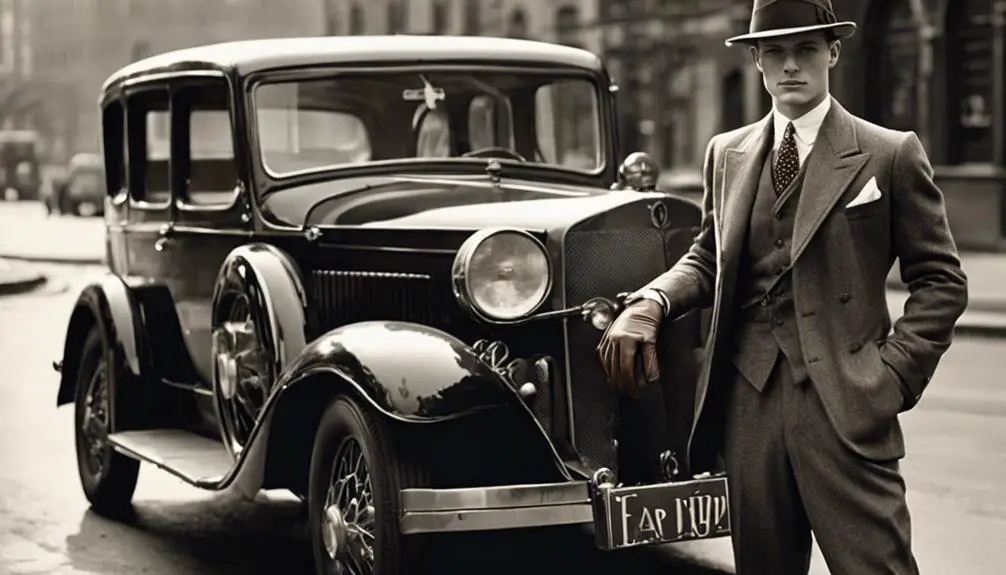
In the early 1930s, a range of key men's fashion brands emerged, each making a significant impact on style and sophistication. One standout was Arrow, renowned for its Oxford Cloth Button Down shirts. These shirts became a wardrobe staple, offering both comfort and elegance to a generation of well-dressed men.
Another prominent name was Dobbs, which specialized in hats. Their high-quality felt and straw hats not only completed outfits but also defined men's fashion during the decade. If you wanted to make a statement, sporting a Dobbs hat was the way to go.
When it came to footwear, Bostonians rose to prominence for their craftsmanship. Their stylish wingtip shoes paired perfectly with tailored suits, adding a touch of refinement to any ensemble.
Meanwhile, Mehringer captured attention with its innovative menswear designs, focusing on quality materials and tailored styles that appealed to the fashion-conscious male.
Of course, no discussion about men's fashion would be complete without mentioning Savile Row. This iconic street in London was the heart of tailored suits, known for its bespoke tailoring. Brands on Savile Row set the standard for fitted suits, embodying British elegance that many aspired to emulate.
Together, these brands shaped the landscape of men's fashion in the early 1930s, each contributing unique elements that defined an era of sophistication and style.
Whether you were dressing for work or a social event, these labels offered the perfect pieces to elevate your look.
Impact of Hollywood on Fashion
During the early 1930s, Hollywood became a powerful catalyst for fashion, with film stars like Greta Garbo and Marlene Dietrich setting trends that captivated the public. Their glamorous looks didn't just dazzle on-screen; they inspired countless women to emulate their iconic style through fashion illustrations and magazines.
You could see this influence in everyday wardrobes, as the beauty industry made it easier for women to adopt those high-fashion elements affordably.
One shining example is Joan Crawford, whose portrayal in "Letty Lynton" made the nipped waist and puffed sleeves wildly popular. In fact, Macy's sold half a million copies of similar styles, proving just how significant Hollywood's impact was.
The cinematic allure didn't stop there; costume designers created elaborate garments that sparked the development of ready-to-wear collections, allowing the public to access that same glamour.
Designers like Elsa Schiaparelli also contributed to the fashion scene by collaborating with surrealist artists, blending theatrical elements with everyday wear. This resulted in unique collections that echoed the imaginative world of Hollywood productions.
As you can see, the influence on fashion during this time was profound and far-reaching, transforming not just trends but also how women viewed their self-expression through clothing.
Hollywood was more than just a film industry; it became a cornerstone of style that shaped a generation's approach to fashion.
Legacy of Forgotten Brands
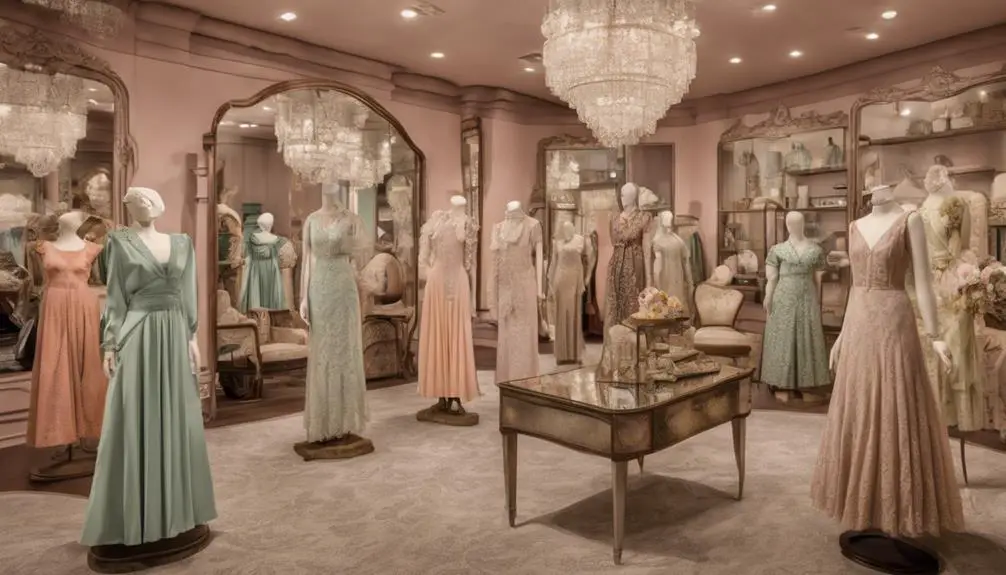
The legacy of forgotten brands from the early 1930s offers a fascinating glimpse into a time when fashion was defined by tailored craftsmanship and innovative designs. Brands like Mehringer and Heath-Sweetser once ruled the scene in New York City, creating stunning tailored suits and dresses that embodied thirties fashion. Costume designer Gilbert Adrian and Edward Molyneux set trends that influenced many, but these brands ultimately faded into obscurity despite their rise in popularity.
You might find it intriguing to reflect on what these brands contributed to their era:
- Elegant tailored suits that defined professionalism
- Groundbreaking designs that shaped the fashion landscape
- Quality craftsmanship that was the hallmark of the thirties
- Fashion ads that influenced societal self-perception
- A vibrant collegiate style inspired by Ivy League universities
The decline in clothing culture contrasts sharply with the appreciation for quality materials and tailored styles that prevailed in the 1930s. Many of these forgotten brands offered innovative designs, yet they couldn't withstand the test of time.
Historical documents and ads reveal how these brands shaped the self-image of society, reflecting the evolving tastes of the time. Though their names may not be recognized today, their contributions to fashion remain significant.
The memory of these brands serves as a reminder of a rich era where fashion wasn't just about clothing but an essential expression of identity.
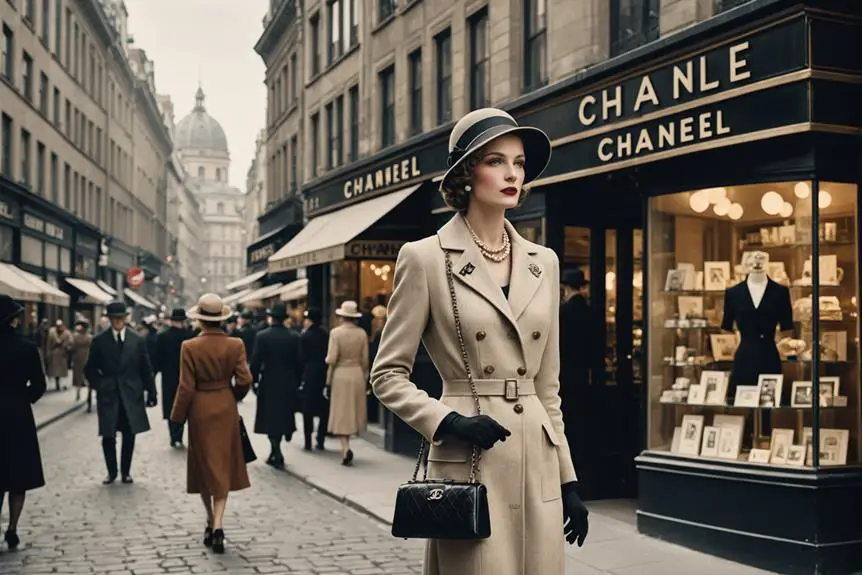

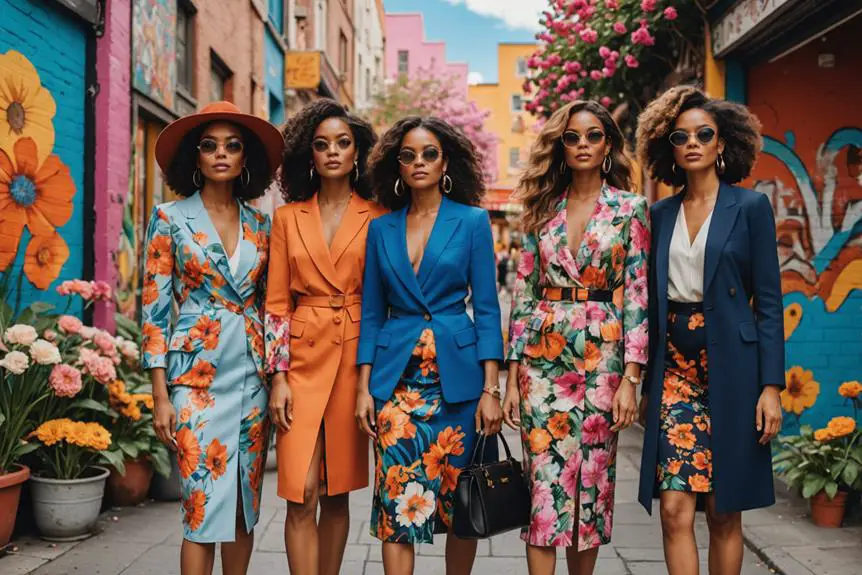
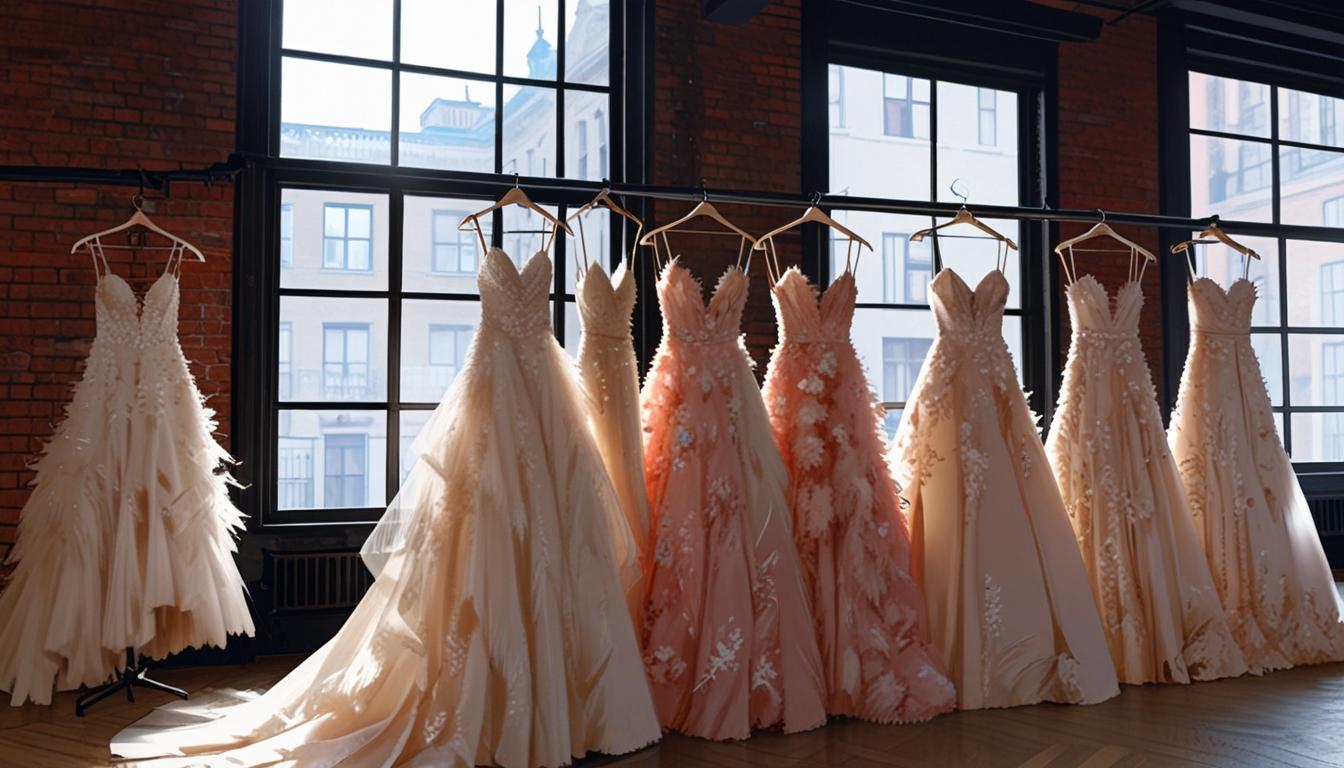
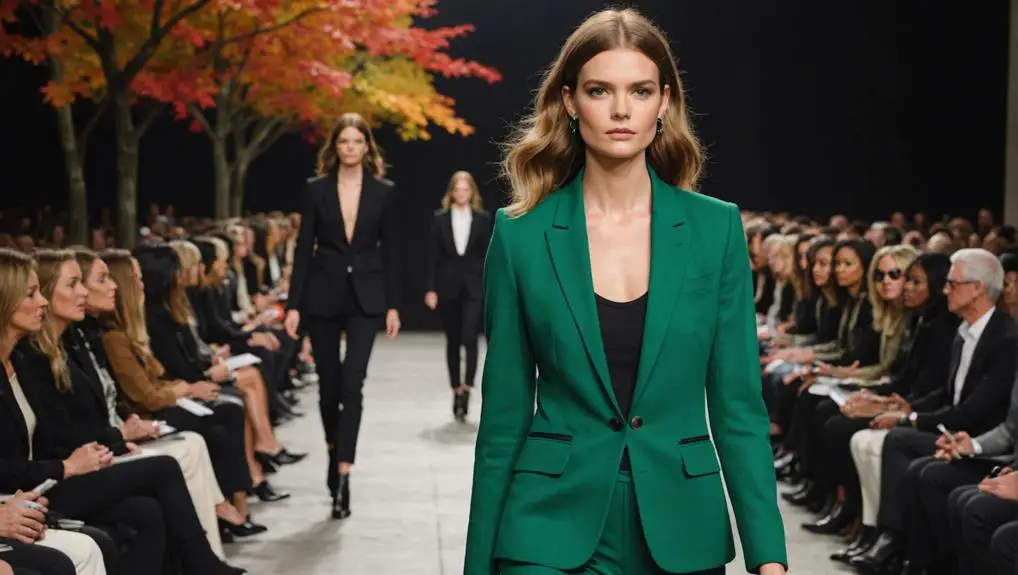
Fantastic stuff. Thanks a lot!
web page
You said this superbly.
casino en ligne
You made your point!
casino en ligne
You mentioned that effectively!
casino en ligne
Wow plenty of useful data.
casino en ligne
Superb content Cheers.
casino en ligne
Appreciate it! Numerous info!
casino en ligne
You’ve made your position pretty clearly!!
casino en ligne
You made your point!
casino en ligne
Really loads of awesome advice!
casino en ligne